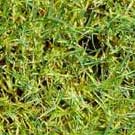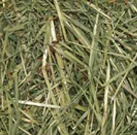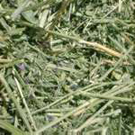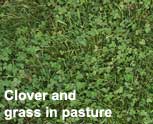Timothy Hay
Timothy hay is one of the most popular hays fed to horses. It can be quite expensive, depending on whether it has to be shipped long distances. Timothy must be harvested in the pre- or early-bloom stage to ensure a high nutrient content. The first cutting usually has a higher weed content, and quality decreases after the second cutting, so the second cutting is usually the best to feed.
Bermudagrass Hay
Bermudagrass hay is used mostly in the southern United States. Common bermudagrass does not grow tall enough for hay production, but coastal bermudagrass can be used. The same stand of grass can be cut four or five times a year. It is as nutritious as timothy hay, and its value can be increased by growing it with a legume.
Oat Hay
Oat hay is an excellent feed for horses. The choice between alfalfa and oat hay depends on price per unit of energy or protein and the type of horse being fed. Depending on the area of the country in which it is grown, oat hay can be low in protein and contain only marginal calcium, phosphorus, and carotene.
Alfalfa Hay
Alfalfa hay is one of the best hays fed to horses. Several characteristics of alfalfa make it an excellent hay for horses.
- It is highly palatable. Most horses will readily consume alfalfa hay. However, because of its high palatability, intake must be restricted to keep horses from overeating and becoming colicky.
- It is high in energy. Alfalfa hay has 120 percent more energy per unit in weight than oat hay. Therefore, it takes less hay to meet a horse’s nutrient needs when feeding alfalfa hay. However, the high-energy content may lead to overfeeding and to a fat horse.
- It is high in protein. Alfalfa hay is high in good-quality protein. Crude protein values can be as high as 18 to 19 percent. People once thought that feeding alfalfa hay to horses caused kidney damage because of increased urination and ammonia production. We now understand, however, that excess protein in alfalfa is converted into energy compounds, and the nitrogen produced in this conversion must be eliminated as ammonia.
- It is a good source of vitamins and minerals. If cured correctly, vitamin C content will be high. The calcium:phosphorus ratio is about 6:1 and must be considered when feeding young, growing horses.
There are generally five to eight cuttings from an alfalfa field each year when irrigated, four to five when not irrigated. The first cutting will have more weeds and grass; the second cutting is usually clean with small stems. The third cutting is good hay, and the fourth and fifth cuttings begin to have more stems and fewer leaves. As more stems are present, the quality of the hay decreases and palatability declines.
Clover and Grass Hay
Clover hays are similar to alfalfa hays because they are legumes. Clover hay is usually mixed with grass hays. There are five kinds of clover hay: red, common white, crimson, alsike, and landino. White and landino clovers are usually grown for pasture. The other three contain 14 to 16 percent crude protein. Red clover causes “slobbers” in horses. Slobbers is excessive salivation that does not hurt the horse.
Learn More about Hay for Horses
- Selecting Horse Hay
- Choose the Right Hay for Your Horses
- Horse Hay Publications
Help us improve our site!

Please take a moment to fill out our survey so we can continue to improve our website.
Ashley Griffin, University of Kentucky







